Day 1- 12 Months of Covid-19 Design and Digital Response with the British Columbia Government
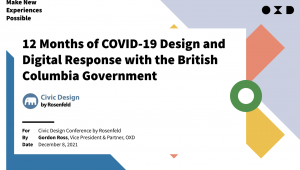
— Good morning! I’m here to talk about my work in digital response with the government of British Columbia, and I’ve brought my favorite time machine to go back in time
— Specifically, the weekend of Good Friday of April 2020. We were four weeks into pandemic after BC declared state of emergency
-
There were 1400 cases of COVID at BC at that point, with 128 people in hospital
— It was a stressful and surreal time, as my wife and I were both working from home, and our kids were home as well
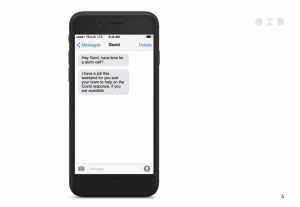
— Suddenly, my phone buzzed with a request from my team to help with the province’s COVID response
— I found myself talking to the assistant deputy minister in BC who was working with various ministries to make sure the provincial food supply was secure for the summer and fall to come
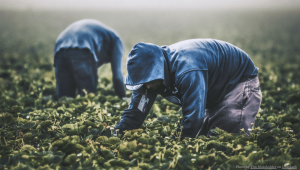
— To secure the food supply though, we needed temporary foreign workers from Mexico to work in the fields, and this required coordination across airport, customs agencies, and government groups
— This was described to me as a design problem, and I was told that the first flight of workers would land next Wednesday
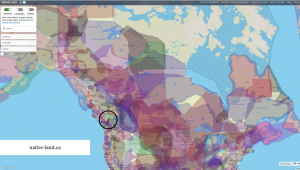
— But before I go on, I’d like to introduce myself and thank the Civic Design conference for having me
— I’d also like to start with a land acknowledgement for truth and reconciliation, amid a group of people who are working on making government better,
-
Government by design still remains a source of sorrow and oppression for others, and I encourage people to reflect and think how to create a better future together

— Returning to April 2020, I mobilized my team to resolve the design problem, and lined-up interviews with senior officials we had on file
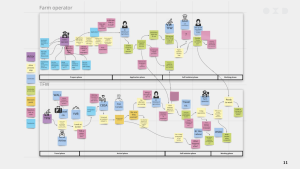
— We began to map out how to get workers from customs, to the airport, to the farm operator,
-
All of this was done remotely from our homes
— We ended up with a partial mind-map, with lots of questions and unknowns
— So we added more post-its and unknowns as we built out the mind-maps
-
We ended up mapping for three solid days, implementing steps, and mitigating risks
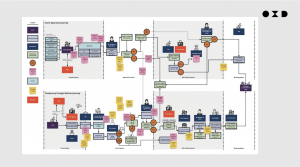
— One session in particular stood out, as we found that having workers isolate for two weeks and then leave the airport couldn’t work
— So the province had to quarantine workers on arrival and pay for lodging and provisions
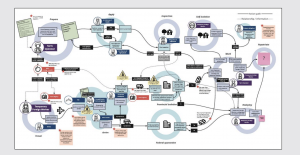
— Our process map soon stabilized though and by July 2020, we understood the results of what we had done
-
4,000 migrant workers arrived and only 35 tested positive in quarantine
-
While other Canadian jurisdictions had rampant outbreaks with foreign workers, there had been zero outbreaks in BC
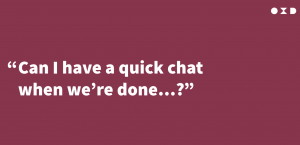
— The BC government then asked for our help with another project, this one focusing on making sure the summer tree planting season still went through
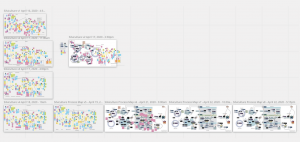
— The next Thursday we were back in Miro with our group, and creating a whole new set of mind maps and process flows
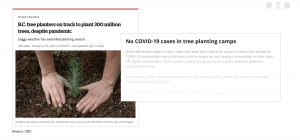
— The tree planting work was also a success with zero cases of COVID in our planting camps
— Our efforts were part of a broader COVID emergency response effort, as many were mobilized to keep essential services running, and much larger public sector worked to help them
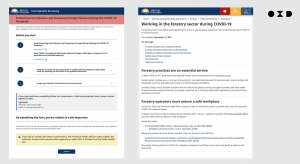
— For example, the government crated digital attestation forms for travelers in late March
— It also updated safety guidances for officers, and empowered local governments to act on these safety guidelines

— But despite these efforts, Covid worked to outstrip the capacity of our existing GDX civic design lab
— So we had a big tent online stand-up meeting set up to wrangle all Covid responses in one unit
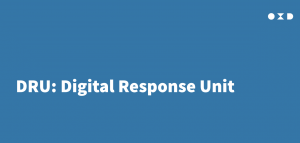
— This unit was called the DRU, or Digital Response Unit
— It wasn’t a formal organizational unit, but a source of situational awareness and traffic control amid various Covid related policy decisions
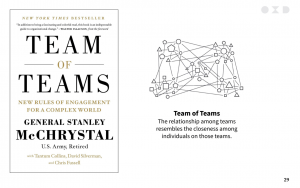
— DRU was a Team of Teams, as described by Stanley McChrystal, where the relationship between teams resembled the closeness of individuals in these teams
— Sample initiatives included:
-
Running elections in BC
-
Registering and administrating vaccines in BC
-
Returning travelers to BC
— While some Covid responses had a comfortable experience, most didn’t, so a networked response was required to deal with the networked threat of Covid
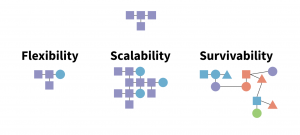
— Three major features were needed to have a coherent networked response
-
Flexibility: The ability of the network to adjust as circumstances changed
-
Scalability: The ability to shrink/grow in size with little disruption
-
Survivability: The ability for the network to grow and change
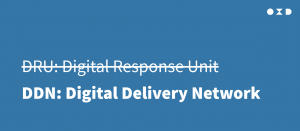
— DRU was renamed as the Digital Delivery Network (DDN), and was always responding in coherent ways , even though we were 375 people out of 35,000 total BC government staff
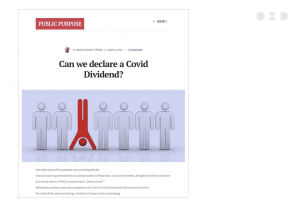
— But now let’s go back to April 2020 one last time
-
At that time, Martin Stewart Weeks came up with the idea of a Covid Dividend, as part of a reflection on whether we should expected the changes implemented during Covid to stick
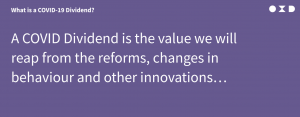
— The definition of the dividend was the value reaped from reforms, changes, and behaviors that were caused prompted or dramatically accelerated by the pandemic, and which delivered sustained improvements in the social, economic, environmental, institutional, personal, and community dimensions of our lives
— It was the bonus we got from things we wouldn’t have achieved without the pandemic, and that were at risk of eroding without the external presence of the pandemic
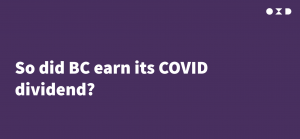
— So did we earn our dividend?
— I’d say yes, as the DDN shortened the network distance between randomly selected government staff that were thrown into the covid response
-
It made coordination/ collaboration faster and more effective
-
It brokered communication and trust
-
It stitched together policies and teams
-
It radiated encouragement and gratitude
— The network, adapted and evolved, creating a ton of value for both province and citizens, value that was beyond existing team or reach prior to existence of pandemic
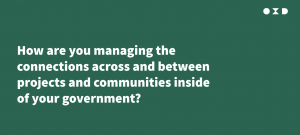
— The code described within DDN still lives on
— So how are you measuring connections across and between projects and communities inside your government?
-
How are you filling in the white space with silos in non-emergencies?
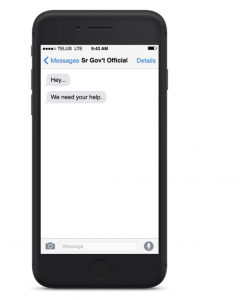
— So that next time when your phone buzzes, and you face a wicked problem, you will be able to have the support you need
— Thank you!
Q&A
-
How do you recreate the buy-in access to ADMs and other stakeholders outside of emergencies?
—> It’s hard and the Covid emergency sharpened our focus and brought together senior leaders whose day jobs require many activities
—> It wasn’t sustainable though, and was hard to create outside of pressure of COVID
-
What was the ’shared why’ in your Team of Teams approach?
—> The bold vision was situational awareness, and seeing all problems, solutions and shared news related to Covid
—>The why was no more complicated than seeing what was going on with various Covid initiatives and rallying people around the cause
-
Was maintainability part of the thinking and how to adapt to the ongoing nature of Covid?
—> We are working to build off the initial vaccination effort in BC into a formal process
-
However, some solutions were quick and dirty and might not be made permanent
—> Organizations will have to deal with current investments made and evolve as needed

